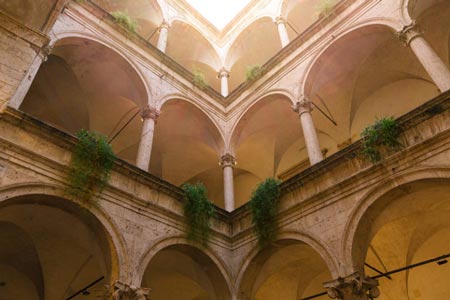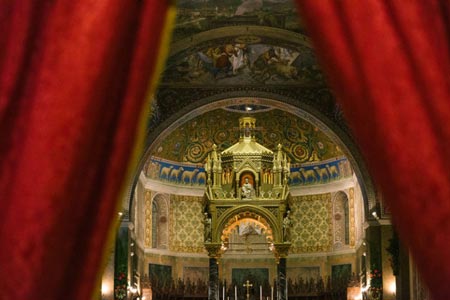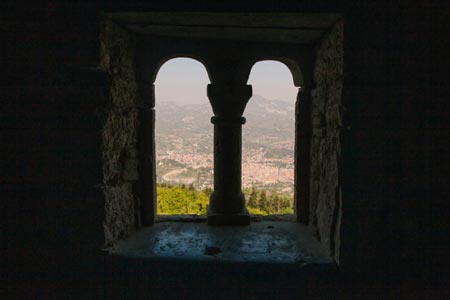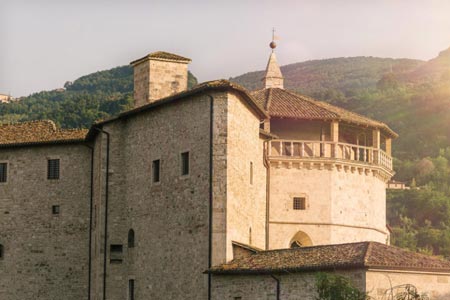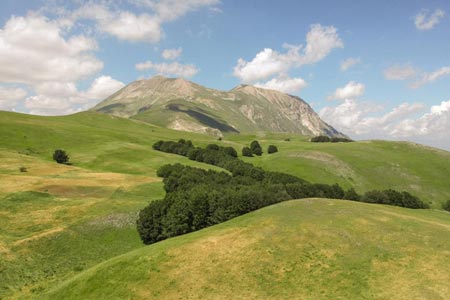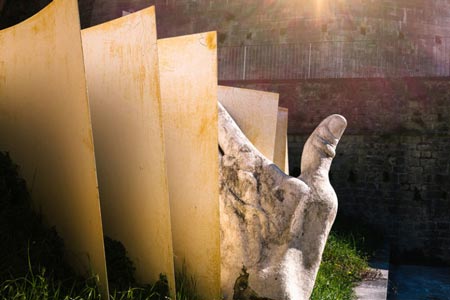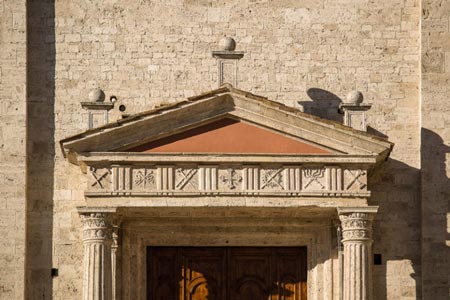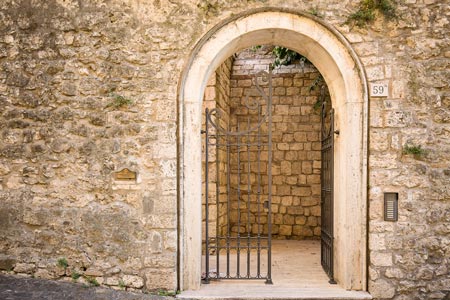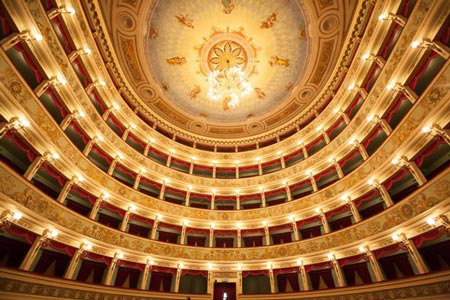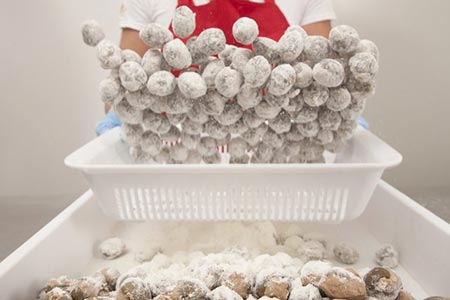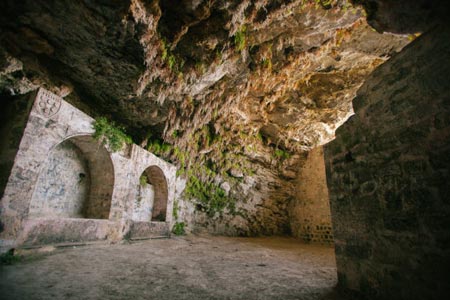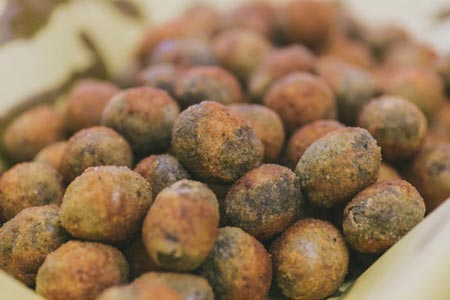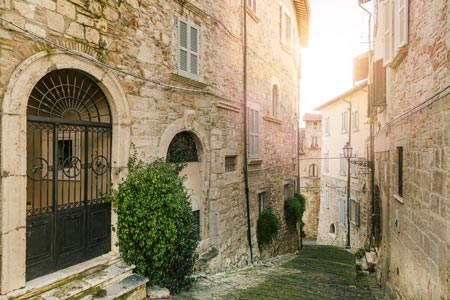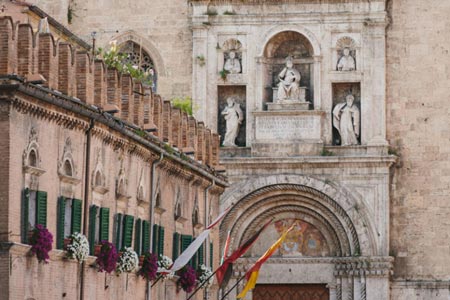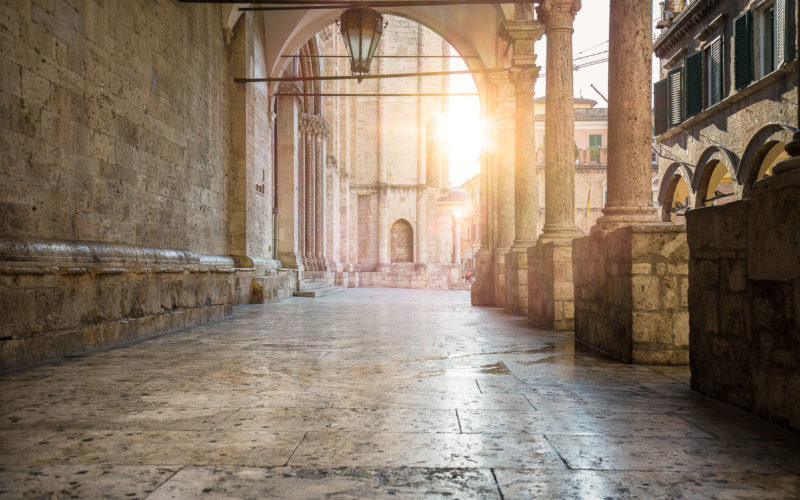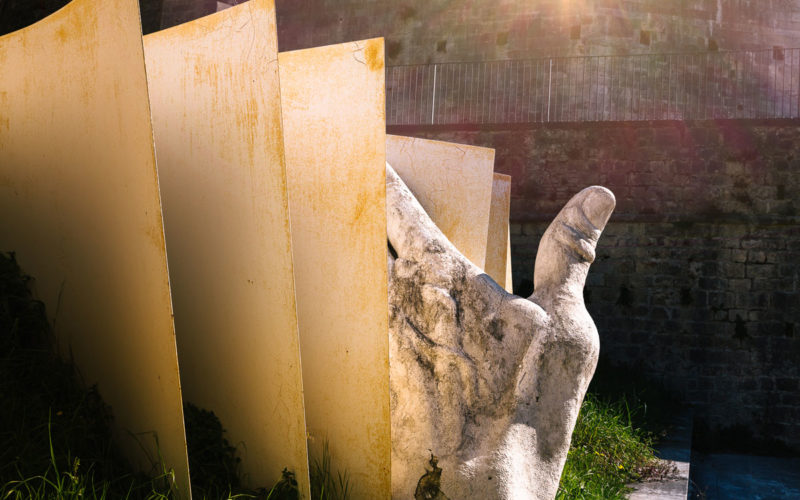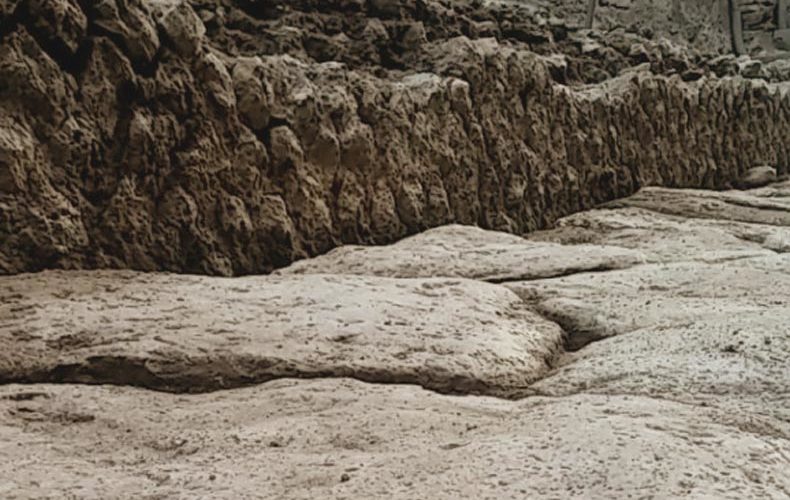Churches to visit in Ascoli Piceno: the Cathedral
Ascoli Piceno’s Cathedral church lies in Piazza Arringo and dominates the city centre. The church is named after St. Emidius, Ascoli’s first bishop and today the city’s patron saint, worshipped as the protector from earthquakes. The church was founded around the 5th century, built over the remains of a former Roman Basilica (where Roman courts were held). In the 11th century, the original Early Christian church with a Latin-cross plan was renovated with the addition of two bell towers on the main façade. In the 15th century, the Cathedral was expanded and the Romanesque towers (still visible from Piazza Arringo) were incorporated into the new façade (1529-39) designed by Cola dell’Amatrice.
The interior is divided into three aisles by octagonal pillars characterized by cross vaults; the dome’s drum features the frescoes of Cesare Mariani, painted between 1884 and 1894 and depicting scenes of the martyrdom of St. Emidius. The wooden ciborium (1895) lying under the dome is a work by Giuseppe Sacconi, an artist born in the nearby village of Montalto delle Marche and famous for being the designer of the “Vittoriano” in Rome. The ciborium is embellished by the statues of the four evangelists, a work by Giorgio Paci.
The 13th-century main altar features wonderful inlaid marble slabs, which originally formed the pluteus (balustrade) of the crypt’s entrance. Behind the altar stands the Gothic choir made of carved walnut wood (1448), a work by Mastro Giovanni di Matteo da Maltignano and his son Paolino d’Ascoli, which was expanded in 1546 by using some architectural elements removed from the Church of St. Peter Martyr. The choir is divided in two semicircles by some figures, among which is probably the oldest artistic representations of St. Emidius.
On both sides of the altar are two chapels: on the left lies the Chapel of Our Lady of Grace, entirely covered in mosaics. The mosaic work was commissioned by former bishop Marcello Morgante and created by the “Bottega del mosaico” of Ravenna in 1961 based on a design by Carlo Mattioli. The work depicts Pope John XXIII and represents the proclamation of Our Lady of Grace as the patron of the city of Ascoli. The chapel is also home to a painting by Pietro Alamanno (15th century) depicting the chapel’s dedicatee. On the right of the main altar stands the so-called Chapel of the Crucifix, named after the 15th-century wooden piece of art the chapel is home to and that was previously in the Church of St. Victor.
Close to the chapel is the Sacristy: built between 1415 and 1425, it features a cross vaulted ceiling and is home to an enchanting walnut wood closet consisting of 14 doors and 12 mirrors, a work by Moise D’Anversa. On the right side of the Cathedral is also the Chapel of the Holy Sacrament: consecrated in 1838, the chapel is octagonal on the outside while inside it has a Greek-cross plan. On the dome’s pendentives are the 4 prophets, a work by Raffaele Fogliardi.
The altar is adorned with a silver frontal, divided in 27 squares on three levels depicting the life of Christ. This altar frontal is one of the finest metalworks in Le Marche and was crafted by Pietro Vannini, a local goldsmith who worked in Ascoli Piceno from 1414 to 1464 and who is also the author of the silver statue of St. Emidius (today at the Diocesan Museum), a copy of which can be seen at the top of the main aisle, on the left. On the altar is a magnificent 16th-century ciborium attributed to Cola dell’Amatrice.
On the wall behind the altar is Carlo Crivelli’s Polyptych, a wonderful piece of art commissioned by Bishop Prospero Caffarelli to the famous Venetian painter: his signature appears on the polyptych and reads “OPUS KAROLI CRIVELLI VENETI 1473”. The so-called predella (the long, bottom panel of the polyptych) depicts Christ blessing and ten apostles. The central section of the polyptych consists of five panels: St. Peter and St. John the Baptist on the left, St. Emidius and St. Paul on the right with the Virgin enthroned with Child in the middle of the scene. In the upper central section of the work is the Pietà (The Pity) with St. Catherine of Alexandria and St. Jerome on the left and St. George and St. Ursula on the right.
The Cathedral can be accessed from a side doorway called “Porta della Musa”: this 16th-century portal is named after an inscription on the right wall of the transept. The wooden door, decorated with carved roses and zoomorphic figures, is a work by Francesco di Giovanni, who worked in Ascoli Piceno until 1518. The double staircase and the elegant balustrade were designed by Gabriele Gabrielli in 1841.
CONDIVIDI I TUOI SCATTI CON GLI HASHTAG: #visitascoli #ascolipiceno2024
AUTHOR: Lella Palumbi, expert in art history
